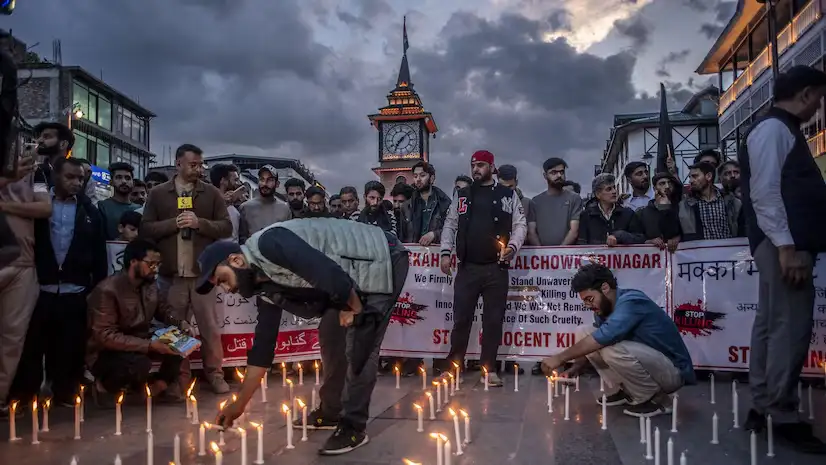Why the Latest India-Pakistan Standoff Is More Dangerous Than Ever Before
The India Pakistan standoff has long been a flashpoint in South Asia, but the latest escalation is proving to be more dangerous than ever. Unlike previous clashes, where tensions simmered but rarely boiled over, this time the risks are higher, the stakes are greater, and the potential for a wider conflict looms large.

A Shift in Militant Targets
In the past, militant attacks in Kashmir often targeted security forces or political leaders. Civilians were occasionally caught in the crossfire, and incidents involving Hindu pilgrims or tourists were rare but tragic. However, in recent years, there’s been a noticeable shift in the tactics of armed groups operating in the region.
The latest attacks have deliberately targeted civilians, including pilgrims and unarmed residents. This shift reflects a new level of brutality and suggests a strategic attempt to inflame communal tensions across India. When militants strike religious gatherings or pilgrimage convoys, it doesn’t just cause loss of life — it stokes deep emotional responses across the country, pushing the situation closer to large-scale retaliation.
The Political Climate in Both Nations
Another reason this standoff feels more dangerous is the political environment in both India and Pakistan. In India, the ruling party has taken a strong nationalistic stance, especially regarding Kashmir. Since the abrogation of Article 370 in 2019, which removed the region’s special constitutional status, tensions have simmered. Any attack is now seen not just as a security threat but as a challenge to India’s sovereignty and national pride.
On the other hand, Pakistan is undergoing severe political and economic instability. With an embattled government and rising internal pressure, there is speculation that elements within Pakistan’s establishment might try to divert attention by escalating tensions with India. Historically, such diversions have taken place during domestic crises.
This combination of strong political posturing, high public emotions, and internal instability on both sides means neither government may have the political space — or willingness — to de-escalate quickly.
Increased Militarization of the Line of Control (LoC)
The Line of Control, the de facto border dividing Indian-administered and Pakistan-administered Kashmir, has always been a tense region. But recent months have seen an uptick in ceasefire violations, cross-border shelling, and increased troop deployment.
India has ramped up its surveillance and anti-infiltration operations along the LoC, using advanced drones and thermal imaging technology. Pakistan, meanwhile, has increased its artillery positioning. This high level of military preparedness on both sides means that even a small incident — like a misfired shell or a misunderstood movement — could spark a wider conflict.
Unlike earlier standoffs, where back-channel diplomacy often worked to cool tempers, this time the region feels like a ticking time bomb.
Lack of Diplomatic Engagement
One of the most concerning differences in this current crisis is the near-complete breakdown of diplomatic communication. In past conflicts, even during peak tensions, both countries maintained some form of backdoor or international mediation efforts. But today, formal dialogue between India and Pakistan has come to a standstill.
India maintains that talks cannot proceed until Pakistan stops supporting cross-border terrorism. Pakistan, on the other hand, continues to internationalize the Kashmir issue, seeking global intervention. With neither side willing to blink first, there is little room left for peaceful resolution — at least in the immediate term.
Global Factors and the Nuclear Shadow
What makes this standoff even more alarming is the broader international context. The world is already on edge with multiple global crises — from conflicts in the Middle East and Ukraine to rising U.S.-China tensions. Global powers are preoccupied, which means less international attention or pressure is being applied to de-escalate South Asia.
Moreover, both India and Pakistan are nuclear-armed states. While a full-blown war is unlikely, the presence of nuclear weapons adds a terrifying layer to any conflict. The “minimum credible deterrence” strategy means that both sides must always consider the possibility, however remote, of a catastrophic escalation.
Military experts have warned that miscalculation or miscommunication during a fast-moving conflict could lead to unintended consequences. That’s why this current situation is being viewed with such seriousness.
Role of Non-State Actors
Unlike traditional wars between uniformed armies, the conflict in Kashmir involves multiple non-state actors — militant groups with their own agendas. These groups often operate without the direct control of either government, making the situation harder to manage.
The involvement of foreign fighters and the emergence of smaller, more radical groups adds unpredictability. These actors do not respond to diplomatic pressure or conventional deterrence strategies. Their primary aim is to create chaos and provoke state reactions — which increases the likelihood of a larger, unintended conflict.
A Tense Public Mood
Finally, one cannot ignore the role of public opinion. In today’s hyperconnected world, images and videos from conflict zones spread instantly on social media. This not only fuels outrage but also pressures governments to act swiftly and decisively, sometimes without fully considering the consequences.
Public sentiment in both countries is highly nationalistic. In India, calls for retaliation after civilian killings grow louder with each attack. In Pakistan, any Indian response is viewed as aggression. This emotional undercurrent reduces the space for diplomacy and increases the demand for military response — making conflict escalation more probable.
Conclusion
The latest India-Pakistan standoff is not just another episode in a long history of regional rivalry. It is marked by a deadly shift in militant strategy, fragile political landscapes, heightened military preparedness, and the absence of diplomatic channels. With both nations standing firm, and a growing tendency to target civilians, the stakes are dangerously high.
Unless cooler heads prevail and dialogue resumes, South Asia may be on the verge of a confrontation that could have far-reaching consequences — not just for the region, but for global peace.






